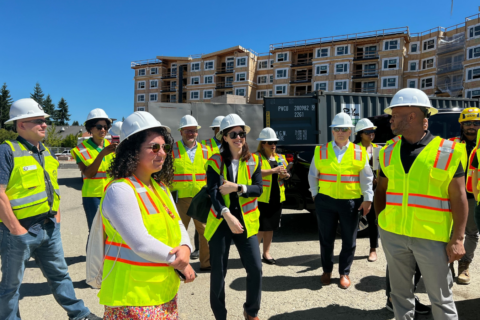Since the declaration of the COVID-19 pandemic, the landscape for eviction prevention has rapidly changed. During the height of the pandemic, cities prioritized keeping households stably housed by developing and implementing various eviction prevention programs and policies, such as rental assistance, eviction diversion and/or legal assistance. As COVID-19 came to an end, cities efforts to prevent evictions have evolved due to COVID-related federal funding, such as Emergency Rental Assistance (ERA) and State Local Fiscal Recovery Funds, not being available anymore following the end of the pandemic. As a result, evictions are rising across the country with significant variation across cities.
The Eviction Landscape
To capture the United States’ eviction prevention landscape, NLC and Stanford Law School Legal Design Lab created the Eviction Prevention Policy and Program Tool. The purpose of the tool is to help elected officials, city staff, nonprofits, service providers, researchers and others better understand the local eviction prevention landscape in the United States. The first iteration of the tool tracked more than 500 policies and programs that were implemented in 200 cities in all 50 states and in the District of Columbia in 2022. And now in 2025, NLC and the Legal Design Lab have updated the tool and added 200 new cities and tracks 800-plus policies and programs, active and historical, that cities have taken to prevent evictions within their communities.
Between 2021 and 2022, state and local governments distributed $46.6 billion in ERA funding to help residents remain stably housed and prevent evictions. Over 10 million renter households were distributed ERA funding and it is estimated that the ERA programs prevented millions of evictions throughout the pandemic. In 2025, NLC finds that only 12 percent of cities had an active rental assistance program, funded with local, state or federal funds, compared to 28 percent of cities explored in 2022.
Since the initial scan conducted by NLC and the Legal Design Lab, the adoption of rental registries has increased. In 2025, NLC found an increase in the number of cities that have adopted a rental registry policy. One hundred and sixty-two cities were found to have a rental registry policy in 2025 in comparison to only 84 cities that had a similar policy in 2022.
In addition, since the scan of cities eviction prevention policies and programs, there has been a decrease in the number of cities that provide or support programs that increase access to legal representation during an eviction proceeding. In 2022, 37 cities were found to have a program that provided access to legal representation and in 2025 only 11 cities were found to provide this support to residents.
Despite eviction filings continuing to rise, cities were less likely to have an active prevention policy or program in 2025 in comparison to cities scanned in 2022. In 2022, 200 cities had more than 500 active prevention policies and programs compared with 2025 where 400 cities had 668 active policies and programs to prevent evictions.
What’s Next?
Looking to the future, there is a critical need for cities to receive robust and sustained funding to prevent evictions. Receiving funding to keep residents stably housed is not only critical for cities, but it also ensures that the capacity developed during the COVID-19 pandemic to prevent evictions remains robust.
Keeping People Housed
NLC’s Local Eviction Prevention Policy & Program Tool includes 800-plus actions, active and historical, from more than 400 communities. Use this tool to discover eviction prevention solutions in your community and beyond.


















